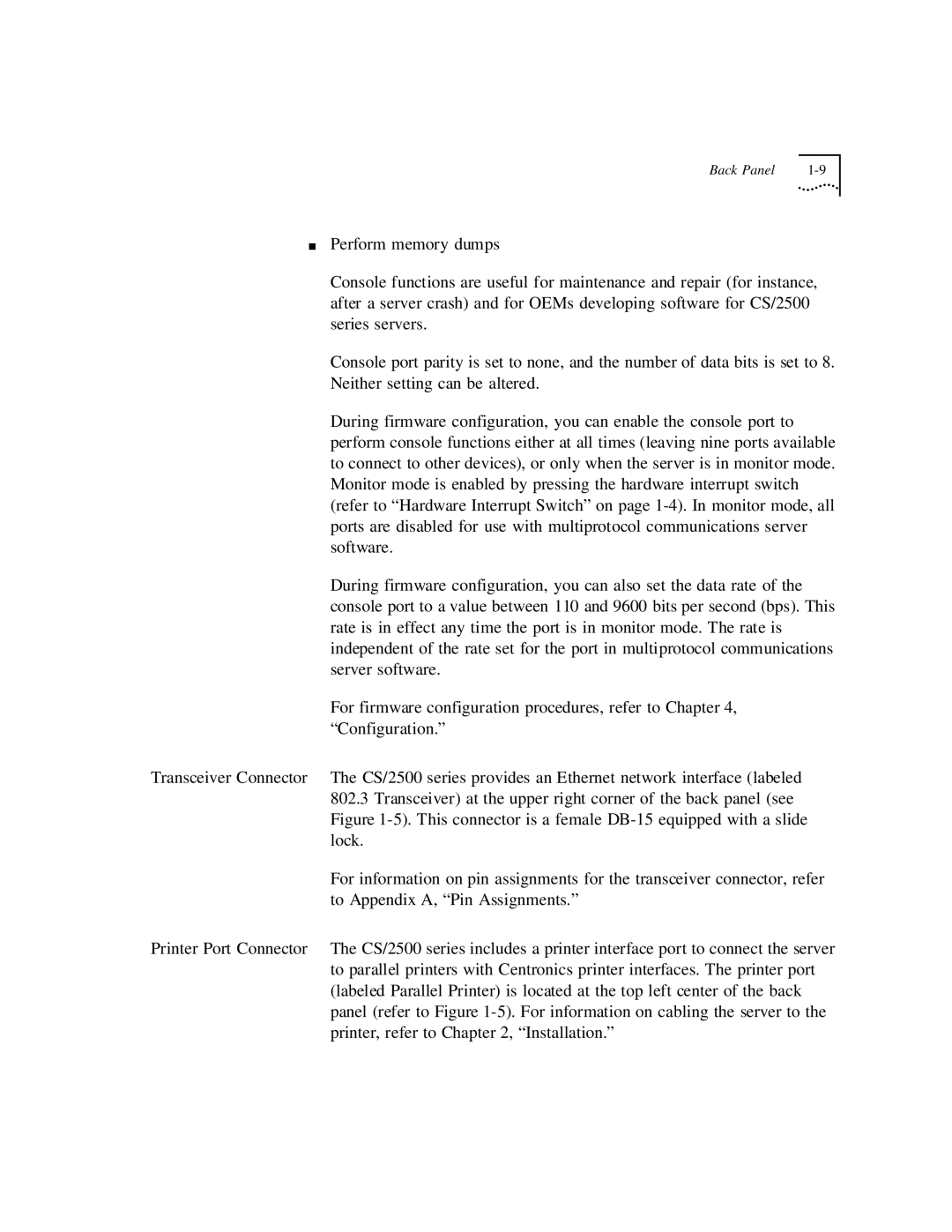Back Panel |
■Perform memory dumps
Console functions are useful for maintenance and repair (for instance, after a server crash) and for OEMs developing software for CS/2500 series servers.
Console port parity is set to none, and the number of data bits is set to 8. Neither setting can be altered.
During firmware configuration, you can enable the console port to perform console functions either at all times (leaving nine ports available to connect to other devices), or only when the server is in monitor mode. Monitor mode is enabled by pressing the hardware interrupt switch (refer to “Hardware Interrupt Switch” on page
During firmware configuration, you can also set the data rate of the console port to a value between 110 and 9600 bits per second (bps). This rate is in effect any time the port is in monitor mode. The rate is independent of the rate set for the port in multiprotocol communications server software.
For firmware configuration procedures, refer to Chapter 4, “Configuration.”
Transceiver Connector The CS/2500 series provides an Ethernet network interface (labeled
802.3Transceiver) at the upper right corner of the back panel (see Figure
For information on pin assignments for the transceiver connector, refer to Appendix A, “Pin Assignments.”
Printer Port Connector The CS/2500 series includes a printer interface port to connect the server to parallel printers with Centronics printer interfaces. The printer port (labeled Parallel Printer) is located at the top left center of the back panel (refer to Figure
